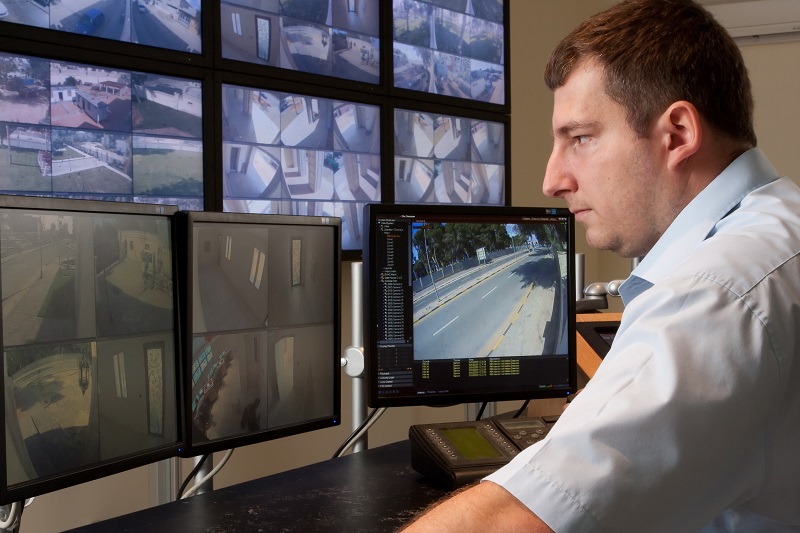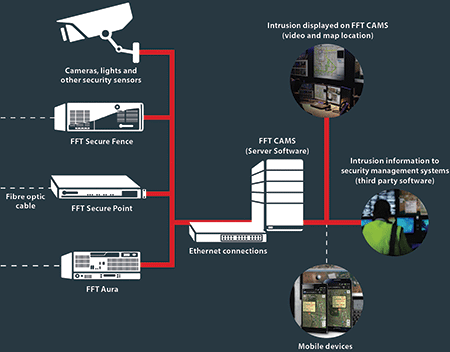Why Fiber Optic Security Equipments Are the Future of Protection
The change to fiber optic protection systems marks a significant innovation in the realm of defense, driven by their extraordinary information transmission abilities and strength to outside disturbances. These systems not only facilitate faster and more reputable interaction but likewise provide a cost-efficient service with lowered upkeep demands. As the landscape of security advances along with emerging modern technologies such as AI and IoT, the potential for optical fiber to improve and redefine safety frameworks becomes increasingly noticeable. Nevertheless, the implications of these innovations raise important questions regarding the future of security actions and their performance in an ever-changing setting.
Advantages of Fiber Optic Systems
Among the primary advantages of fiber optic systems is their superior data transfer capacity, which facilitates the transmission of large quantities of data over fars away without considerable loss. This characteristic is especially advantageous for security applications that call for the continuous surveillance and transfer of high-def video clip feeds, sensing unit data, and various other vital info. Optical fiber can accommodate the growing demands of modern-day safety and security systems, making certain that information remains intact and dependable.
In addition, fiber optic cables are less prone to electro-magnetic disturbance, which can be a significant problem in atmospheres with numerous digital devices. This resistance boosts the integrity of the information being transmitted, consequently decreasing the risk of information breaches or system failures. Furthermore, fiber optic systems are naturally much more secure than typical copper wires, as touching right into a fiber optic line without discovery is extremely difficult.
The sturdiness of fiber optic cables also contributes to their allure. They are immune to environmental variables such as dampness and temperature variations, lowering upkeep costs and increasing system longevity. In general, these benefits setting fiber optic systems as a durable and efficient selection for contemporary safety and security facilities, making sure dependable and protected information transmission.
Improved Information Transmission Speed

The ability to transfer large amounts of data promptly promotes the smooth assimilation of high-definition video feeds and advanced analytics. Safety and security systems can now refine and analyze info in real-time, improving action times and situational awareness. In addition, fiber optic links support longer transmission distances without deterioration of signal high quality, making them suitable for extensive protection networks.
The boosted speed of fiber optic systems not only improves the performance of protection procedures but likewise decreases latency. This is particularly essential in essential circumstances where timely decision-making can prevent protection breaches or alleviate possible risks. As organizations continue to focus on safety and effectiveness, the need for rapid and reliable data transmission will unquestionably solidify fiber optic systems as a keystone of modern safety and security framework.
Resistance to Disturbance
Fiber optic protection systems constantly demonstrate exceptional resistance to electro-magnetic interference, an essential benefit in environments prone to electronic sound. Unlike standard copper cables, which can be adversely affected by magnetic fields, superhigh frequency disturbance, and various other forms of electrical disruption, fiber optic cords utilize light to transfer information. This intrinsic property makes certain that the signals continue to be clear and unchanged, despite bordering digital activity.
The usage of glass or plastic fibers in fiber optic technology develops a barrier versus disturbance, enabling for reputable data transmission even in challenging circumstances such as commercial centers, city locations with high electronic website traffic, or locations near radio towers. This characteristic dramatically minimizes the possibility of signal destruction or loss, making fiber optic systems especially suitable for safety applications where stability and accuracy of data are vital.
Furthermore, this resistance to disturbance improves the overall efficiency and reliability of security systems, making sure that monitoring and sharp systems function effortlessly. In a globe where safety and security is significantly endangered by advanced innovations, the strength of fiber optic systems attracts attention as a crucial feature, enhancing their status as an important element of modern-day safety and security facilities.
Cost-Effectiveness With Time
Considerable price financial savings can be accomplished gradually with the application of fiber optic safety systems. While the initial financial investment might appear greater compared to conventional copper-based systems, the lasting economic benefits emerge through minimized functional and maintenance costs (fiber security). Fiber optic cables are naturally more resilient and much less at risk to ecological elements, which equates imp source to reduce substitute and repair expenses over their life expectancy
In addition, fiber optic systems call for less power to operate, which better decreases power prices. Improved data transmission abilities permit fewer repeaters and amplifiers, reducing tools go to the website financial investment and enhancing installment procedures. The scalability of these systems likewise contributes to cost-effectiveness, as companies can expand their safety infrastructure without incurring substantial additional expenditures.
An additional variable to think about is the boosted performance in tracking and response capabilities that fiber optics supply. Enhanced real-time data transmission can result in quicker incident action times, potentially mitigating losses and liabilities related to safety and security violations. Altogether, the lasting benefits of fiber optic safety systems not just warrant the preliminary expense but also position them as a financially prudent selection for organizations looking for durable defense solutions.

Future Technologies in Safety
Progressing modern technologies are established to transform safety and security systems, integrating expert system (AI) and equipment knowing to improve hazard detection and action capabilities. These developments will certainly allow protection systems to assess vast amounts of data in real-time, determining patterns and abnormalities that show prospective threats. This proactive approach will certainly allow much faster decision-making and more effective incident actions.
Additionally, the unification of the Net of Points (IoT) is leading the way for interconnected safety tools, providing detailed security and tracking. Smart sensing units can relay information concerning environmental modifications, while automated signals can alert safety and security personnel right away of dubious activities.
In addition, the advancement of biometric innovations will next page certainly additionally bolster security devices. Face recognition, fingerprint scanning, and retina recognition are becoming much more sophisticated, offering layers of verification that are tough to bypass.
Conclusion
To conclude, fiber optic protection systems represent a substantial improvement in protection technology, providing unmatched information transmission speed, resistance to electromagnetic interference, and lasting cost-effectiveness. As the demand for advanced security solutions remains to grow, the assimilation of optical fiber with arising modern technologies such as AI, IoT, and biometrics will certainly additionally boost security frameworks (fiber security). The combination of these innovations will make sure a more safe and secure and responsive environment, strengthening optical fiber as a foundation of future security systems
Comments on “Investing in a Fiber Optic Security System: Why It’s the Next Step of Secure Systems”